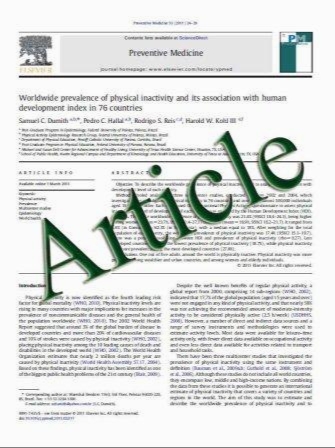Prevalence of intimal heat shock protein 60 homologues in unstable angina and correlation with anti-heat shock protein antibody titers
- نوع فایل : کتاب
- زبان : انگلیسی
- مؤلف : Rene´ P. Andrie´ Gerhard Bauriedel Peter Braun Hans W. Ho¨pp Georg Nickenig Dirk Skowasch
- چاپ و سال / کشور: 2011
Description
Heat shock proteins (HSPs) are among the most highly conserved and immunogenic proteins shared by microbial agents and mammals. Human (h) HSP60 is upregulated under stress conditions and serves as a target for cross-reactive cytotoxic HSP-serum-antibodies. The present study evaluates the expressions of hHSP60 and its homologue chlamydial (c) HSP60 in advanced human coronary lesions and correlates intimal tissue-bound HSP expressions with circulating HSP-antibodies. Coronary atherectomy specimens retrieved from 100 primary target lesions of patients with unstable angina (UA; n = 40) or stable angina (SA; n = 60) were assessed immunohistochemically for the presence of hHSP60 and cHSP60. In a subgroup (n = 40), blood samples were tested for anti-Chl. pn.-IgG/IgA-titers and anti-HSP65-antibody titers. Coronary plaques revealed immunoreactive hHSP60 in 55% and cHSP60 in 45% of the lesions. Expression of both HSP homologues was significantly (each p\0.001) higher in UA lesions compared with SA lesions (7.4 vs. 1.2% and 6.0 vs. 1.1%). HSP homologues showed positive correlations both in UA- and SA-lesions (r = 0.41, 0.33; p\0.05). cHSP60 showed no association with anti-Chl. pn.-IgG/IgA-titers, whereas expressions of both homologues correlated positive with anti-HSP65-Ab titers (r = 0.42, p\0.05; r = 0.50, p\0.01). Intimal amounts of HSP60 homologues were associated with increased expressions of C-reactive protein, Toll-like receptor-4 and tissue factor. Human and chlamydial HSP60 colocalize within coronary atheroma, most prevalent in lesions associated with UA. Our data demonstrate a significant correlation between the intimal expressions of HSP60 homologues and serum HSP65 antibodies, thereby suggesting that humoral immune reactions may play an important role in coronary atherosclerosis and plaque instability.
Basic Res Cardiol (2011) 106:657–665 Received: 3 January 2011 / Revised: 16 February 2011 / Accepted: 4 March 2011 / Published online: 18 March 2011


